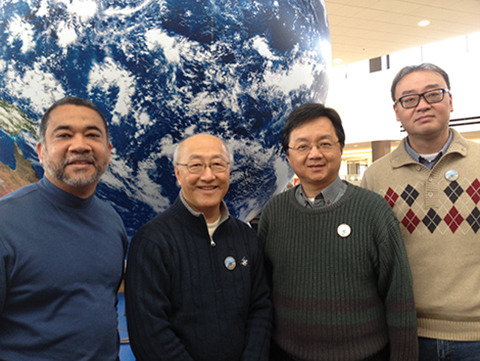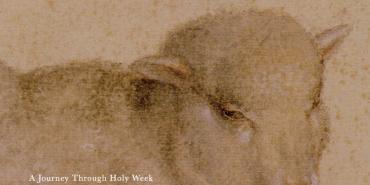Should Yours Be a Multi-ethnic Congregation?

Recently, Holiness Today (HT) spoke with Roberto Hodgson (RH), multicultural ministries director for the Church of the Nazarene, about raising awareness of changes in the ethnic and social make-up of communities, and how local churches can reach people as they adjust to life within those communities.
Hodgson has served the Church of the Nazarene for the last 30 years| 10 years as a pastor, 10 years as the Hispanic coordinator for the Mid-Atlantic District, and his last 10 years as the USA/Canada Hispanic Ministries coordinator. For the last five years, he has also served as the Southwest Latin American District superintendent. Roberto has facilitated the starting of several Latino/Hispanic congregations and has established several Hispanic ministerial district training centers. He and his wife, Carol, have two daughters.
HT: Why should any congregation give thought to multi-ethnic ministries?
RH: Jesus calls his church to reach all people. His final words to his disciples are found in Acts 1:8, "But you will receive power when the Holy Spirit comes on you| and you will be my witnesses in Jerusalem, and in all Judea and Samaria, and to the ends of the earth." God's plan of salvation for the human race is universal for all nations and transcends the cultural context of the disciples, to whom it was first given. As on the day of Pentecost, people from all nations are coming to USA/Canada and other countries around the world. The Church of the Nazarene's mission, "Making Christlike Disciples in the Nations" is founded in Jesus? Great Commission to the church in Matthew 28:18-19.
HT: Are there different types of these congregations?
RH: Yes, there are two types of multi-ethnic congregations.
1) The multi-congregational church is described by the Manual of the Church of the Nazarene in paragraph 100.1: "Organized local churches may enlarge their ministry by establishing Bible classes in various languages using the facilities of these churches. These Bible classes may develop into church-type missions or fully organized churches."
2) The multicultural church is another model characterized by ethnic diversity within a church using one common language for its functions. These churches enable the local congregation to become a missionary church in its own community without crossing geographical national boundaries.
HT: The concept of a multi-ethnic congregation can seem overwhelming. Where do we start?
RH: We have a golden opportunity to reach out to our communities with the gospel of Jesus Christ. We start with Jesus? command. Secondly, we need a vision. Jesus calls his church to have eyes for the harvest. Do you not say, ?There are yet four months, and then comes the harvest?? Behold, I say to you, lift up your eyes and look on the fields, that they are white for harvest." (John 4:35 NASB). Third, we must commit to prayer. We cannot underestimate the necessity of the spiritual discipline of prayer in our personal lives and in our church life to fulfill the mission of the church.
HT: Where is the balance of all groups in a multi-ethnic congregation agreeing to adapt for each other?
RH: "God has poured out his love into our hearts by the Holy Spirit, whom he has given us" (Romans 5:5b). In our theological tradition, we call this infilling "Perfect Love." Perfect love is what Jesus calls us to live. "?Love the Lord your God with all your heart and with all your soul and with all your mind.? This is the first and greatest commandment. And the second is like it: ?Love your neighbor as yourself?" (Matthew 22:37-39).
Jesus came to proclaim the incarnation of God's love to humanity in the inauguration of the kingdom of God as good news to all nations, races, and cultures. In Christ, God's people need to respect all races and cultures. "There is neither Jew nor Greek, slave nor free, male nor female, for you are all one in Christ Jesus" (Galatians 3:28).
HT: What are the statistics about immigration? What do we need to realize about this?
RH: We are experiencing the greatest migration"a human tsumani"in the history of the world, all over the world. In October, 2011, the United Nations reported on world population and migration. Seven billion people live on the planet. In the last five decades, 1 billion people have migrated| 80 percent was internal migration and 20 percent external| 214 million people left their countries of origin. Over 42 million have arrived in the U.S. during the last 50 years. The majority of the new immigrants are arriving from Asia, Africa, Mexico, Central America, and South America. Most U.S. cities are becoming increasingly multi-ethnic. This is also increasingly true of small towns and rural areas. Once again, we have a golden opportunity to reach out to our communities with the gospel of Jesus Christ.
HT: How are finances handled when one group may feel as though they are putting in more than others?
RH: Jerry Appleby, author of Missions Have Come Home to America writes, "Our time, our buildings, our leadership, our money, and"above all"our Lord must be shared if the ethnic harvest . . . is to be reaped. This is not easy! Our resources must be God's possessions."
HT: What benefits occur when various groups come together in a multi-ethnic congregation?
RH: The local church can have a most enriching cross-cultural experience, reaching and discipling people, and building multicultural congregations or multi-ethnic congregational churches. The local church will have the excitement not just of hearing about cross-cultural missions, but also becoming the story tellers themselves, experiencing the signs of the kingdom that characterize a missionary church.
The multi-ethnic congregational church will have the blessing of different worship experiences as the incarnation of the gospel is celebrated by the different cultures. In the worship service, the peoples? culture will be manifested in the incarnation of God in their experiences. These diverse expressions are a true reflection of the kingdom of God and a glimpse of heaven in the local church.
Holiness Today, 2013
Please note: This article was originally published in 2013. All facts, figures, and titles were accurate to the best of our knowledge at that time but may have since changed.




